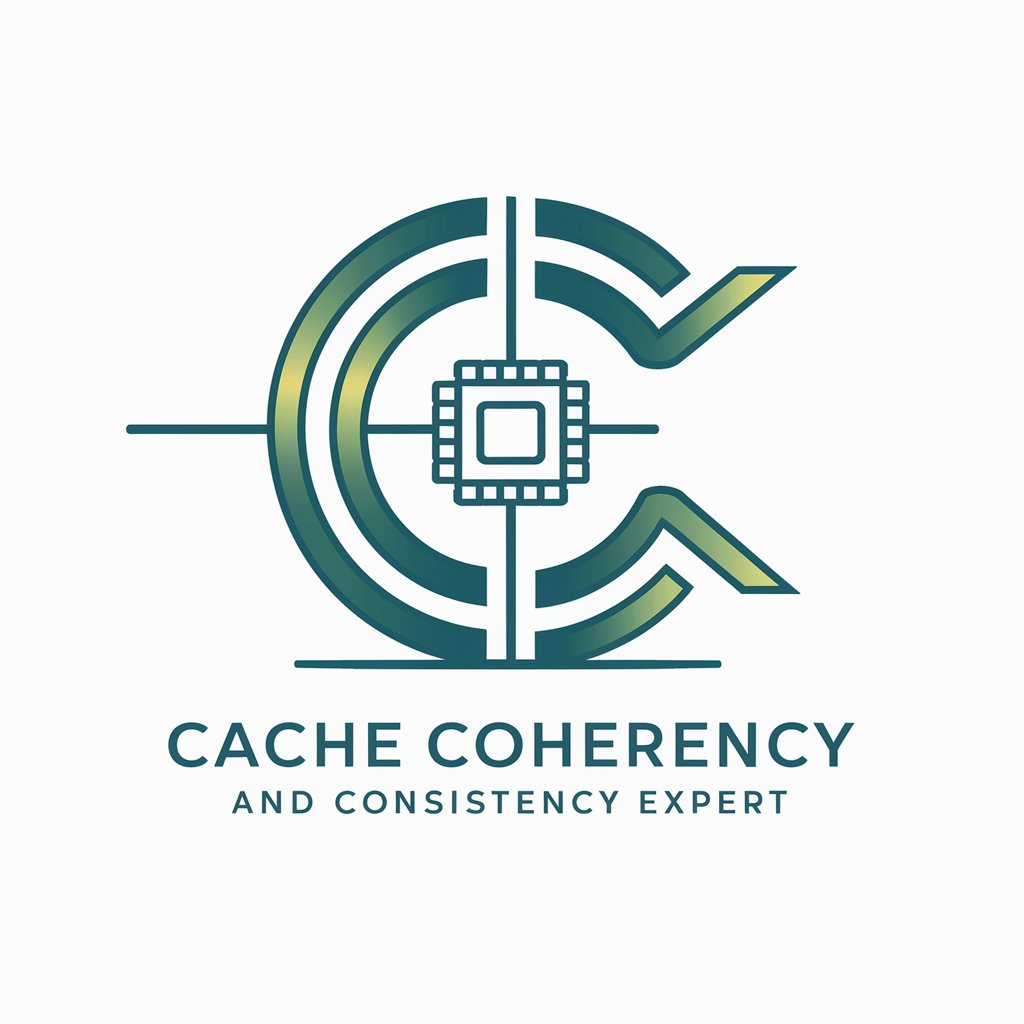Cache Coherency and Consistency Expert - Cache Coherence Tool

Welcome! Let's delve into the complexities of cache coherency and consistency.
Streamlining System Coherence
Can you explain the differences between MESI and MOESI protocols?
How does cache coherence affect system performance in a multi-core processor?
What are the key challenges in maintaining cache consistency?
Describe the role of memory barriers in ensuring cache coherence.
Get Embed Code
Introduction to Cache Coherency and Consistency Expert
The Cache Coherency and Consistency Expert is a sophisticated tool designed to provide detailed and advanced insights into the concepts of cache coherence and memory consistency in computing systems. It serves as a comprehensive resource for understanding how various coherence protocols interact with memory models to maintain data consistency across different computing cores and cache hierarchies. This tool is particularly useful in scenarios involving multi-core and multi-processor environments, where maintaining data accuracy and synchronization is crucial. Examples include the analysis of snooping and directory-based coherence protocols, as well as exploring the effects of different memory consistency models like Sequential Consistency (SC) and Total Store Order (TSO). Powered by ChatGPT-4o。

Main Functions of Cache Coherency and Consistency Expert
Detailed Analysis of Coherence Protocols
Example
Exploring how snooping protocols maintain coherency across processors that share a common bus system and how directory protocols handle larger, distributed systems.
Scenario
Useful in designing systems that require robust data coherence solutions, such as high-performance computing clusters.
Simulation and Optimization of Memory Consistency Models
Example
Examining the performance implications of relaxed memory models versus strict models like SC, particularly in the context of how writes and reads are ordered.
Scenario
Beneficial for software developers optimizing concurrency in applications to ensure correct execution while maximizing performance.
Educational Resource on Cache Coherence and Memory Consistency
Example
Providing a foundational understanding through detailed examples and case studies, such as the MIPS R10000 implementation of SC.
Scenario
Used by students and educators in advanced computer architecture courses to grasp complex concepts crucial for designing modern multi-core processors.
Ideal Users of Cache Coherency and Consistency Expert Services
Hardware Engineers
Professionals involved in the design and development of multi-core processors, who need to ensure that their designs effectively manage cache coherency and consistency to prevent data races and synchronization issues.
Software Developers
Developers writing parallel and concurrent applications, particularly those using low-level memory manipulation and optimization, who must understand the underlying hardware behavior to ensure program correctness.
Academic Researchers and Students
Individuals in educational institutions studying advanced computer architecture, who require deep insights into theoretical and practical aspects of coherence and consistency to enhance their research and learning.

How to Use Cache Coherency and Consistency Expert
Start with a Free Trial
Visit yeschat.ai to begin using Cache Coherency and Consistency Expert with a free trial that requires no login or ChatGPT Plus.
Understand the Basics
Familiarize yourself with the key concepts of cache coherency and consistency by reviewing related computer architecture materials.
Identify Your Use Case
Identify your specific need or problem area within cache coherence and consistency to make the most out of the tool’s capabilities.
Engage with the Tool
Interactively query the system with specific scenarios or problems you encounter in your work or studies to gain detailed insights.
Explore Advanced Features
Use the tool's advanced options for deeper analysis or simulation of cache coherence protocols and memory consistency models.
Try other advanced and practical GPTs
InnovAI by Michal Cach
Unleash Creativity with AI-Powered Solutions

Paper Mache Techniques
Craft Your Imagination with AI

Kobalt Tools Cache
Empowering Projects with AI-driven Tool Insights

Cyber Guard
Empowering cybersecurity with AI.

Privacy Guard
Simplifying Privacy Policy Complexity

Cyber Guard
AI-Powered Guard Against Email Threats

Heimdall Data Database Query Cache Expert
Optimize database performance, effortlessly.

Paper Mache
Revolutionizing scientific paper review with AI.

Health Coach
Empowering Your Health Journey with AI

Health & Wealth Navigator
Empowering Retirement Decisions with AI

Health Scale
Empowering healthier choices with AI

Health Coach
Empower Your Wellness Journey with AI

FAQs on Cache Coherency and Consistency Expert
What is cache coherence?
Cache coherence refers to the protocol used in multiprocessor computer architectures to manage the consistency of data stored in local caches of a shared resource.
How does consistency differ from coherence?
Consistency refers to the memory model defining the correctness of the operations order, while coherence ensures that multiple copies of data across caches reflect the same value.
Can I simulate different coherence protocols?
Yes, Cache Coherency and Consistency Expert allows you to simulate and analyze the effectiveness of different cache coherence protocols.
How do I validate memory consistency models?
The tool offers features to test and validate memory consistency models against specified criteria and scenarios to ensure they meet the required standards.
What are the applications of this tool?
It is used in academic research, design of multicore processors, and by professionals in the computer architecture industry to improve system performance and correctness.
